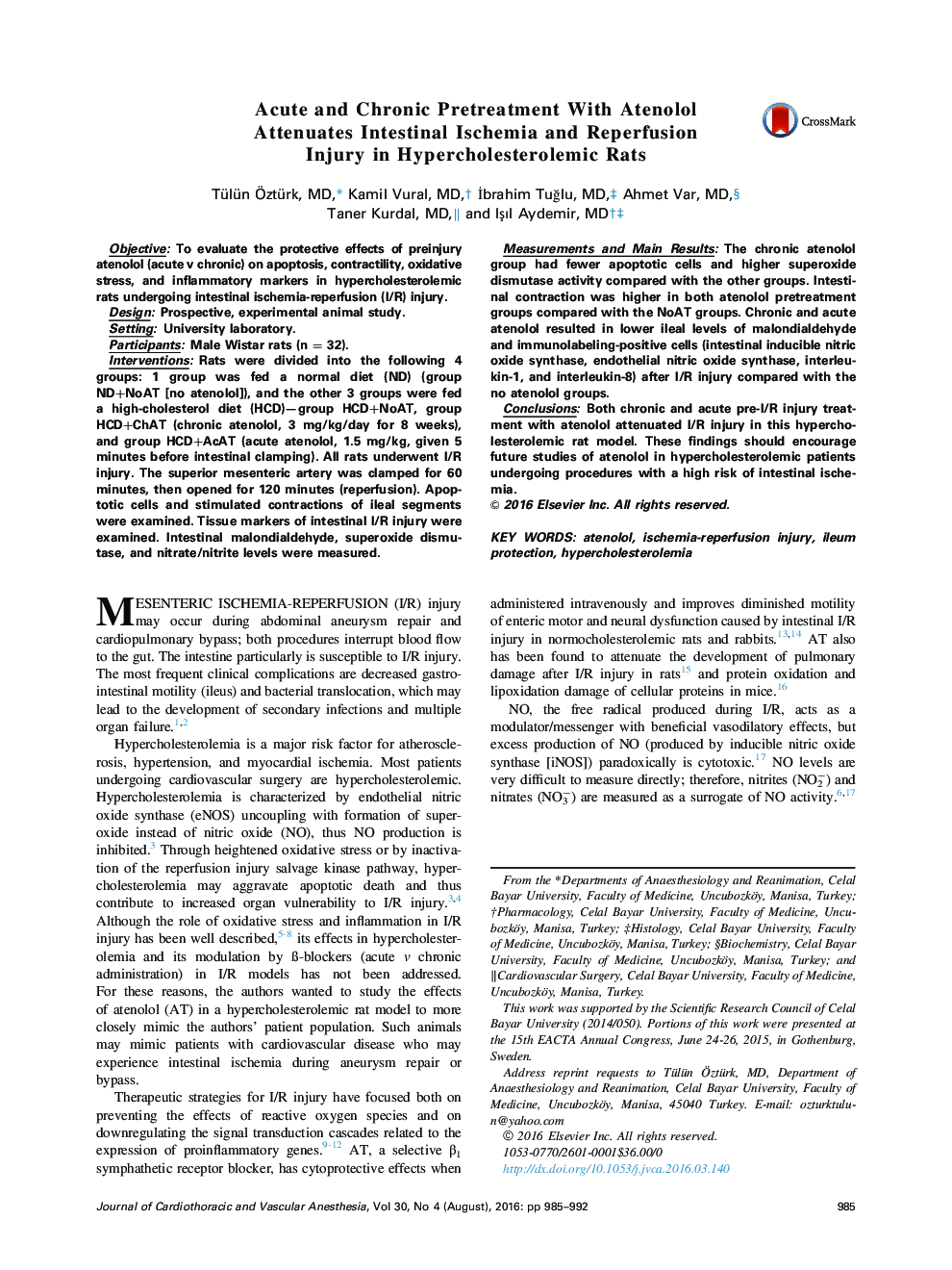| کد مقاله | کد نشریه | سال انتشار | مقاله انگلیسی | نسخه تمام متن |
|---|---|---|---|---|
| 5883514 | 1150137 | 2016 | 8 صفحه PDF | دانلود رایگان |
ObjectiveTo evaluate the protective effects of preinjury atenolol (acute v chronic) on apoptosis, contractility, oxidative stress, and inflammatory markers in hypercholesterolemic rats undergoing intestinal ischemia-reperfusion (I/R) injury.DesignProspective, experimental animal study.SettingUniversity laboratory.ParticipantsMale Wistar rats (n = 32).InterventionsRats were divided into the following 4 groups: 1 group was fed a normal diet (ND) (group ND+NoAT [no atenolol]), and the other 3 groups were fed a high-cholesterol diet (HCD)-group HCD+NoAT, group HCD+ChAT (chronic atenolol, 3 mg/kg/day for 8 weeks), and group HCD+AcAT (acute atenolol, 1.5 mg/kg, given 5 minutes before intestinal clamping). All rats underwent I/R injury. The superior mesenteric artery was clamped for 60 minutes, then opened for 120 minutes (reperfusion). Apoptotic cells and stimulated contractions of ileal segments were examined. Tissue markers of intestinal I/R injury were examined. Intestinal malondialdehyde, superoxide dismutase, and nitrate/nitrite levels were measured.Measurements and Main ResultsThe chronic atenolol group had fewer apoptotic cells and higher superoxide dismutase activity compared with the other groups. Intestinal contraction was higher in both atenolol pretreatment groups compared with the NoAT groups. Chronic and acute atenolol resulted in lower ileal levels of malondialdehyde and immunolabeling-positive cells (intestinal inducible nitric oxide synthase, endothelial nitric oxide synthase, interleukin-1, and interleukin-8) after I/R injury compared with the no atenolol groups.ConclusionsBoth chronic and acute pre-I/R injury treatment with atenolol attenuated I/R injury in this hypercholesterolemic rat model. These findings should encourage future studies of atenolol in hypercholesterolemic patients undergoing procedures with a high risk of intestinal ischemia.
Journal: Journal of Cardiothoracic and Vascular Anesthesia - Volume 30, Issue 4, August 2016, Pages 985-992
